Article from Global Innovative Products
Clippard, Cincinnati, produces fluid control products and other high-precision components, and prides itself on having been vertically integrated for decades, since its founding in 1941. The company operates two ISO-certified manufacturing locations in Ohio and does advanced machining of all types to produce its extensive catalog of standard and custom product for a myriad of markets worldwide. At the heart of its machining capabilities are 12-axis CNC Swiss machines, CNC milling centers and CNC wire EDMs, plus numerous post-finishing operations, including anodizing, EN plating and thermal deburring. Various metal and thermoplastic materials are machined.
After extensive discussions with a local EDM supply distributor, a proprietary hybrid coated brass wire was presented to the Clippard director of operations, Robin Rutschilling, and his CNC/EDM programmer, Trevor McCoy, by Barry Ramsay of Global Innovative Products (GIP), a Mason, Ohio, supplier of consumables for EDM shops through the GIP distributor network, who also produces a variety of its own products for need-specific operations in EDMing. One such product is a Plasma hybrid coated brass wire, comprising of a gamma-phase intermetallic zinc alloy-coated wire with brass core. This GIP innovation had proven out in numerous lab testings but needed “real world” production validation. Ramsay and GIP application engineer Brad Hansard approached the team at Clippard.
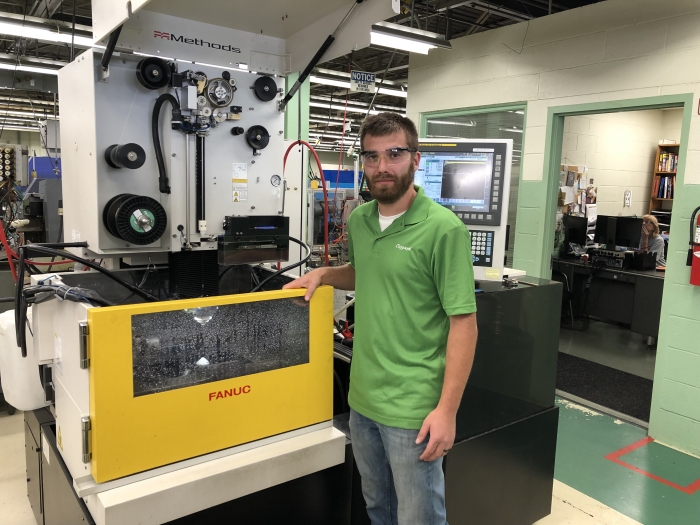
Trevor McCoy, CNC/EDM programmer at Clippard, runs a FANUC wire EDM with the GIP proprietary Plasma coated brass wire. McCoy states he achieves a finer finish with 15% to 20% improvement in run time. (Machine hood open only for photo purpose.)
As the product had been found suitable for all types of wire machines, with excellent auto-threading capability and increased performance, even at conventional brass wire settings, Ramsay felt confident the product would outperform what Clippard was currently using in its EDM shop, including other GIP wire. This new product was being offered in 0.008”, 0.010” and 0.012” (20mm, 25mm and 30mm) diameters, so Ramsay proposed giving the Clippard EDM department a supply for testing on one of its FANUC wire machines.
Gamma phase brass is a brittle intermetallic alloy (Cu5Zn8) with a high zinc content (approximately 65% Zn), which can also be synthesized by a diffusion anneal. However, when such coatings are wire drawn subsequent to the diffusion anneal, the coating will fracture due to its brittleness and redistribute around the wire circumference creating a discontinuous layer sometimes described as a “porous layer,” which promotes turbulent flow enhancing the flushing of debris. However, it is zinc enrichment created at the surface combined with the elevated melting point of CuZn gamma phase (approximately 800º C, or 1,472º F), which are the biggest factors contributing to the performance of gamma phase coated brass wire.
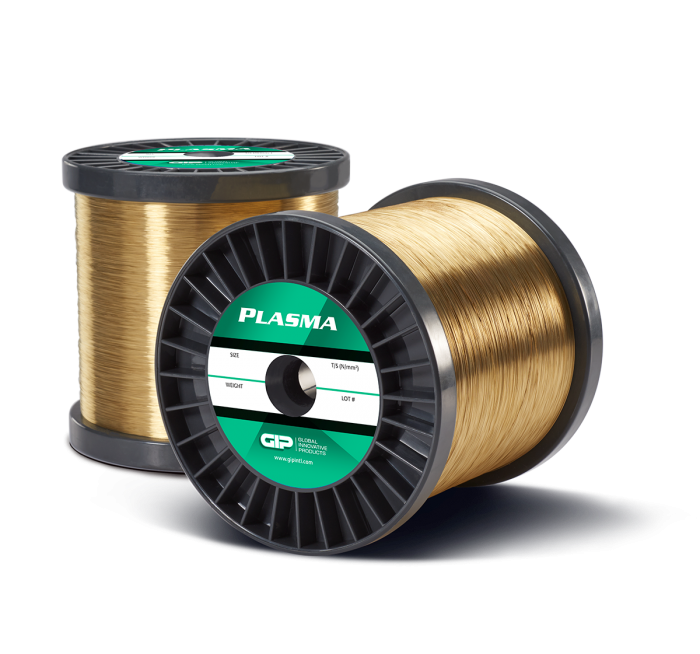
GIP offers Plasma hybrid coated brass wire.
The arrangement between the two companies actually began in a somewhat unconventional manner, as McCoy related. “We have an Ocean hole popper (electrode/sinker EDM) and the circuit boards needed repair. Brad was able to do that kind of work, which I knew from previous experiences with him. So, he proposed exchanging the board servicing for the opportunity to test the GIP hybrid PLASMA wire. Seemed reasonable to us, so we agreed.”
The FANUC wire EDM in the shop at Clippard seemed an ideal candidate for GIP, as well. Ramsay said, “We knew they were running all types of materials and some very high-precision tooling used in their own machine shop for the production of various pneumatic components with very tight tolerances. It seemed a very good place to test our new wire, which had been proven out on our own EDM’s at GIP.”
He further said it was a handshake deal, a “classic collaboration between two companies for their mutual benefit,” adding that application engineering supplied by GIP further enhanced the use of the product at Clippard, as the test learning process information was shared without reservation, so both companies benefited.
In this test case, many of the components were being run for the production of special parts being produced by Clippard for robotic arm articulation.
The testing immediately yielded positive results, as McCoy noted Clippard was holding tolerances under a tenth, with a microfinish that was very important for the application. “We do a lot of custom work for our own use, over 50% of my production in EDM. Some of the hard tool steels are difficult to drill and we also run various others.The jobs require a lot of setup time and fixturing, so run time, finish and wire breaks all are critical for us.”
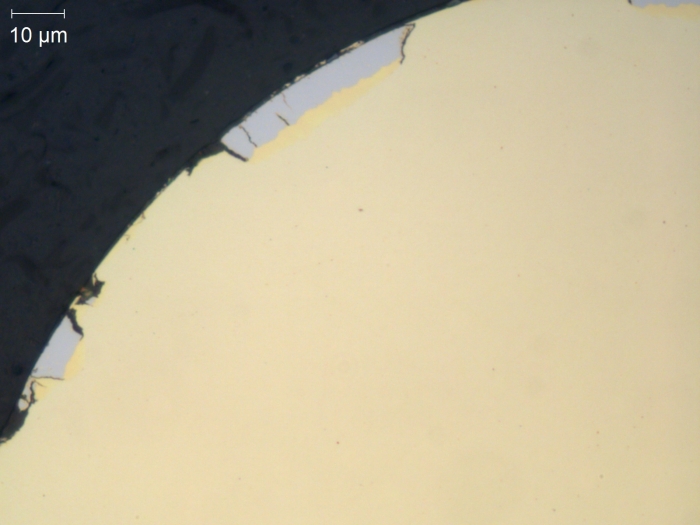
A cross section view of the Plasma coated brass EDM wire shows the discontinuous layering, caused by fracturing during the diffusion annealing process.
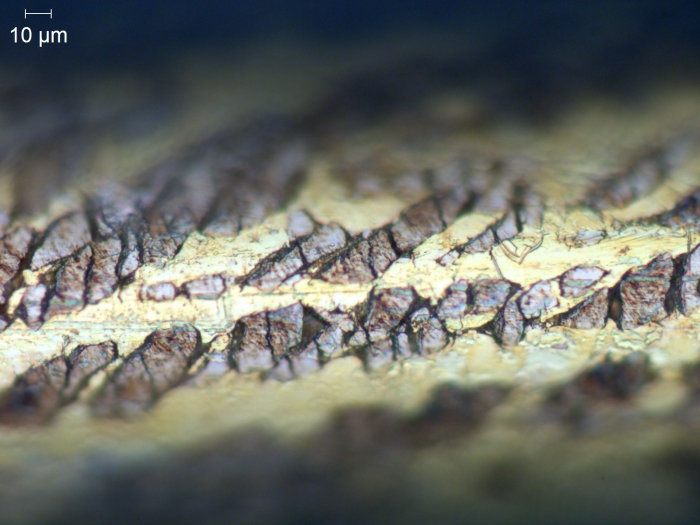
This surface formation actually enhances the flushing of the workpiece during machining.
The goals for this proprietary wire testing were three, according to Ramsay. “The characteristics of the Plasma wire in production on the FANUC machine at Clippard were important, as the flushing of their precision components directly impacts quality. Further, we had our own test results galore but needed an outside house to validate what we were seeing. Lastly, we just wanted to help our friends at Clippard, who had been so cooperative and, in this case, needed our help with those circuit boards. It was a classic win-win for both of us, as all three goals were met.”
Multiple parts were EDMed during the testing of this Plasma wire, with full comparative data tracked on the test wire vs. conventional brass. One tool for a medical part was produced, for example, in 0:56 vs. 1:05 with five skim passes, a 16% improvement in overall production.
McCoy said, “We could apply more power to run faster. The GIP product consistently outperforms premium brass, based on my experience with both now.” He also cited a very practical advantage. “The Plasma wire is as clean as conventional brass.” Ramsay added that the price point is also competitive, so there’s less of a premium to achieve these enhanced results.
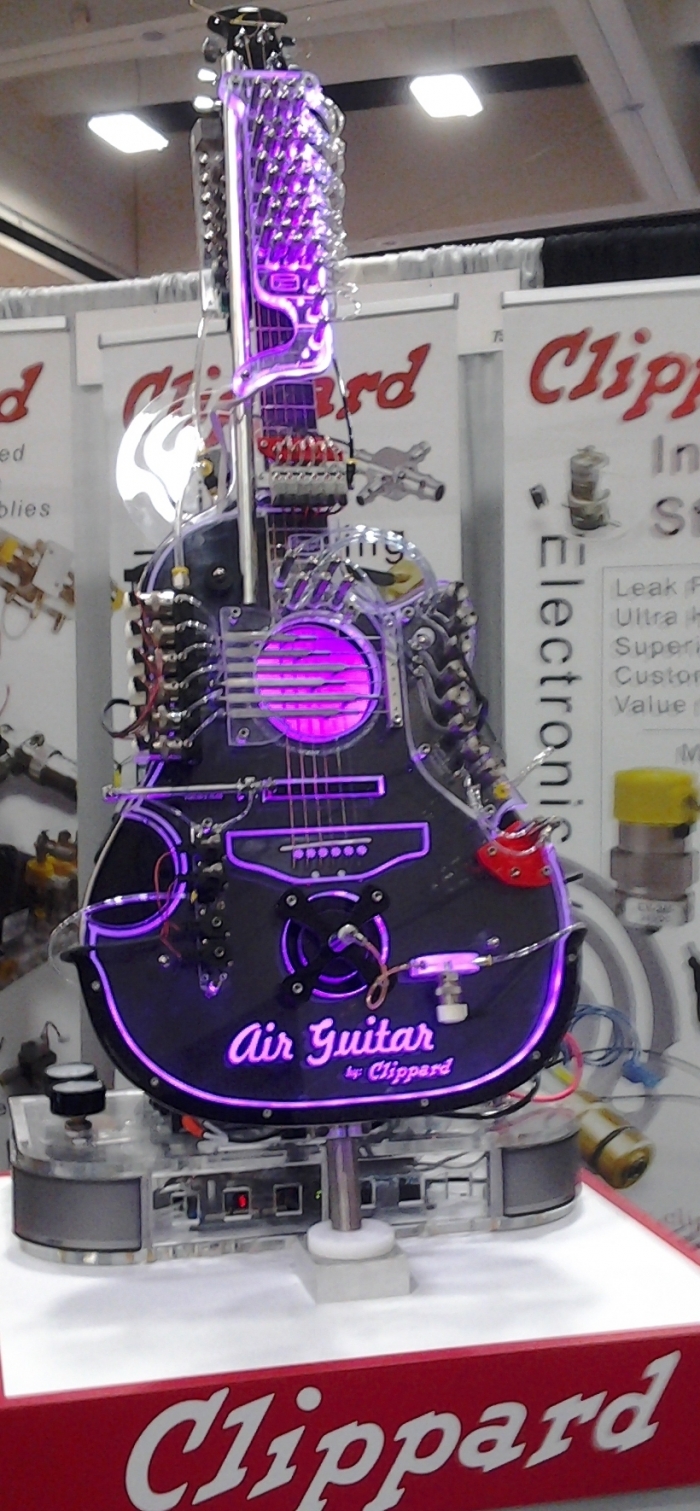
The Clippard “Air Guitar” produced by the engineers and manufacturing specialists at Clippard, using the company’s pneumatic components.
Clippard is a third-generation, family-owned and operated company that has developed many pneumatic components for a variety of applications in industry, commercial and even fun applications. Clippard’s Chief Marketing Officer Rob Clippard developed the “air guitar” that operates with the company’s pneumatic valves and cylinders. Click here to see it in performance of the classic Pachelbel Canon in D. A wonderful intersection of music’s magic with the technology of one very creative company!
Chris Agricola, advertising manager at Clippard, contributed to this story.
Related Glossary Terms
- annealing
annealing
Softening a metal by heating it to and holding it at a controlled temperature, then cooling it at a controlled rate. Also performed to produce simultaneously desired changes in other properties or in the microstructure. The purposes of such changes include improvement of machinability, facilitation of cold work, improvement of mechanical or electrical properties and increase in stability of dimensions. Types of annealing include blue, black, box, bright, full, intermediate, isothermal, quench and recrystallization.
- centers
centers
Cone-shaped pins that support a workpiece by one or two ends during machining. The centers fit into holes drilled in the workpiece ends. Centers that turn with the workpiece are called “live” centers; those that do not are called “dead” centers.
- computer numerical control ( CNC)
computer numerical control ( CNC)
Microprocessor-based controller dedicated to a machine tool that permits the creation or modification of parts. Programmed numerical control activates the machine’s servos and spindle drives and controls the various machining operations. See DNC, direct numerical control; NC, numerical control.
- diffusion
diffusion
1. Spreading of a constituent in a gas, liquid or solid, tending to make the composition of all parts uniform. 2. Spontaneous movement of atoms or molecules to new sites within a material.
- electrical-discharge machining ( EDM)
electrical-discharge machining ( EDM)
Process that vaporizes conductive materials by controlled application of pulsed electrical current that flows between a workpiece and electrode (tool) in a dielectric fluid. Permits machining shapes to tight accuracies without the internal stresses conventional machining often generates. Useful in diemaking.
- gang cutting ( milling)
gang cutting ( milling)
Machining with several cutters mounted on a single arbor, generally for simultaneous cutting.
- milling
milling
Machining operation in which metal or other material is removed by applying power to a rotating cutter. In vertical milling, the cutting tool is mounted vertically on the spindle. In horizontal milling, the cutting tool is mounted horizontally, either directly on the spindle or on an arbor. Horizontal milling is further broken down into conventional milling, where the cutter rotates opposite the direction of feed, or “up” into the workpiece; and climb milling, where the cutter rotates in the direction of feed, or “down” into the workpiece. Milling operations include plane or surface milling, endmilling, facemilling, angle milling, form milling and profiling.
- tool steels
tool steels
Group of alloy steels which, after proper heat treatment, provide the combination of properties required for cutting tool and die applications. The American Iron and Steel Institute divides tool steels into six major categories: water hardening, shock resisting, cold work, hot work, special purpose and high speed.
- wire EDM
wire EDM
Process similar to ram electrical-discharge machining except a small-diameter copper or brass wire is used as a traveling electrode. Usually used in conjunction with a CNC and only works when a part is to be cut completely through. A common analogy is wire electrical-discharge machining is like an ultraprecise, electrical, contour-sawing operation.
